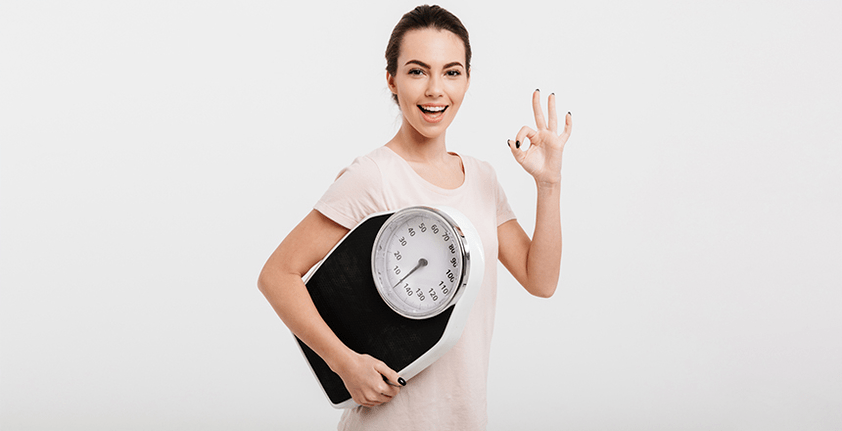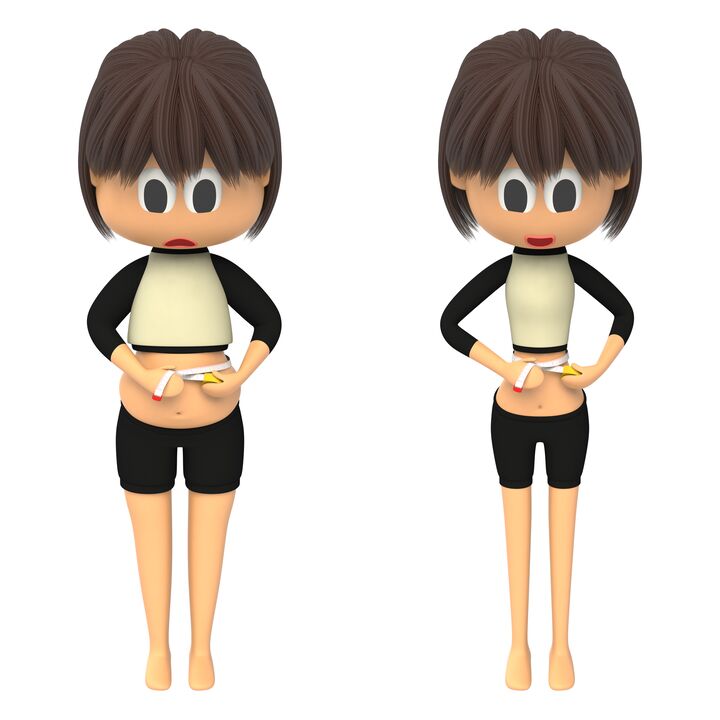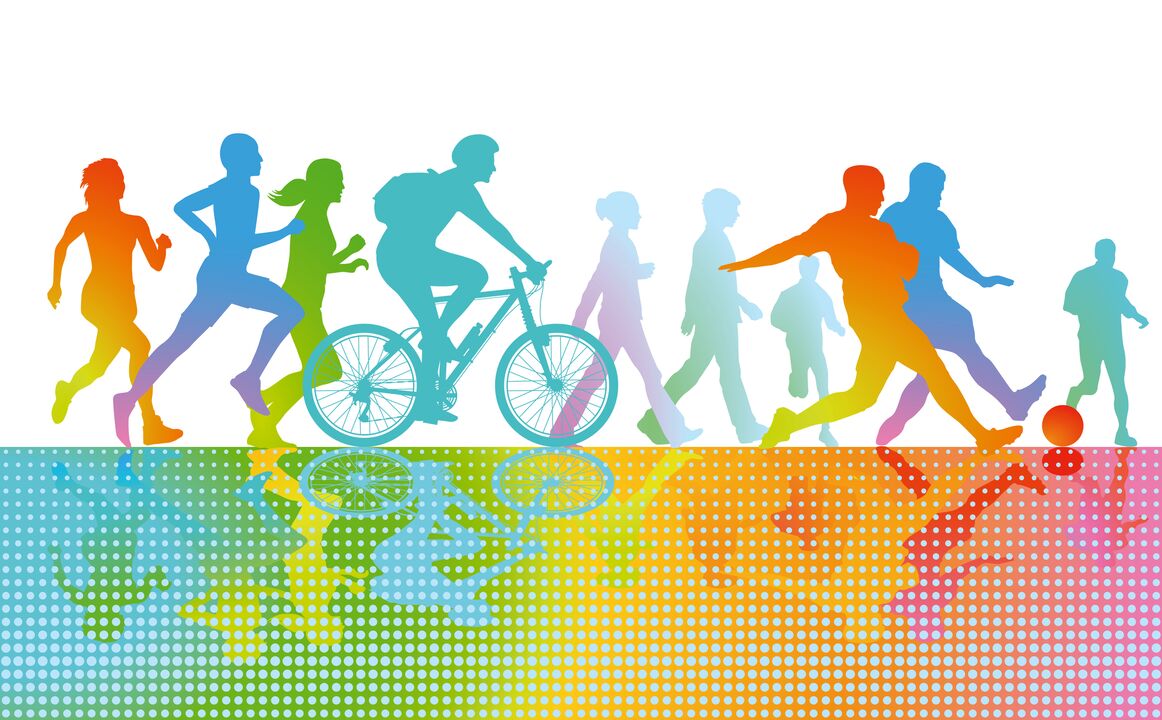
The purpose of this article is to form a correct understanding of the problem of excess weight, prioritize the solution of this problem and determine the direction of movement on the journey of losing weight. In short, to answer the questionHow to lose weight?»
Is it overweight?
Not everyone who has decided to fight extra pounds, they really overdo it. Subjective assessments of a person's body are often not confirmed by objective data about the presence of excess weight.
Often, in the pursuit of physical perfection, many achieve compliance with a certain image, and everything apart from it is considered superfluous, and in this case, it is enough to correct the image with the help of loads on certain parts of the body. body.
That is why:
Step 1. Calculations with anatomical and constitutional parameters and determination of your status by weight
To diagnose being overweight, use the body mass index (BMI), recommended by the World Health Organization:
BMI \u003d Body weight (kg) / height (m²).
If, according to the results of calculations, you fall into the category of overweight, then you should understand that while maintaining your usual lifestyle and nutrition in the future, you can already fall into the obese group. Measures to reduce weight should be started immediately.
Step 2. Motivation
Goals to lose weightbasically no different from any other goal. This is a strategic conceptachievement of objectives, as good asmaintain resultsit is necessary to start any path exactly with the definition of the destination of this path.
First, we need to separate the concepts of goals and objectives. Weight loss is a task that needs to be solved, it answers the question: "what needs to be done? ". And the goal of losing weight should answer the question: "Why did all this have to start? "
When it comes to losing weight, you can set goals through motivation. It must be realized by the person himself, only then can one count on the resistance to the trials and stresses that always accompanies everyone during the period of weight loss.

Everyone has their own motivation.
- Health. Obesity is primarily a threat to health: the risk of various diseases of the cardiovascular, respiratory, digestive system, disorders of the musculoskeletal system, genitourinary system, skin lesions, endocrine diseases.
- Expansion of physical abilities: easier to carry out normal daily physical activities (easier to climb stairs, do household chores, just walk), opportunities to do your favorite sport, outdoor activities, active tourism, etc.
- ANDother purpose, which for many is a serious incentive:
- back to the regular closet,
- clothing style,
- become a fashion trend trend,
- become an object of pride for oneself and loved ones, etc.
When the goal is determined, it must be continuously cultivated, so that in times of crisis, when the "hands down", and there is a temptation to stop halfway, it plays the role of an ambulance to awaken the will to win.
Step #3. Finding the causes of overweight and their elimination
Immediately you need to consider that it is right to do it under the guidance of a competent medical curator.
The main reason for being overweight is that energy intake from food exceeds its consumption and accumulates in fat cells (adipocytes). And this may be the result of several factors.
Malnutrition: both quantitatively and qualitatively
The main thing I want to note is that a competent approach does not include rapid weight loss (more than 5 kg per month, optimally 2-3 kg per month).The request to lose weight within a week is naive, and speaks of the urgent need for this among those who ask for it. A long time to accumulate extra pounds in the body indicates a long-term project to get rid of them without harm to health.
You can often hear arguments in the form:I eat a little, but I'm still getting better.
If the excess is stored, it means that the excess comes with food.
The easiest and most effective way to adequately evaluate your regular diet is to keep a food diary for 2 weeks. It should reflect:
- eating time,
- volume and composition of food consumed,
- the amount of free fluids you drink
- time and amount of alcohol consumed.
For further analysis and efforts to develop correct eating habits, information about the condition of the food consumed (after psychological stress, before and after physical activity) is also useful.
Food diary analysis and dietary adjustments should be made by a dietician based on the calculation of daily requirements for a particular person, as this takes into account individual characteristics, physiological characteristics, household stress, use of cars for transportation, level of physical activity, etc.
It is important to correctly distribute the energy content of food during the day: the foods with the most calories should fall in the period of the day with maximum physical activity, when they can be fully used.
Common dietary mistakes:
- lack of breakfast
- snacks on the way
- dinner, which in terms of energy value sometimes exceeds daily physiological needs.
General recommendations for proper nutrition for weight loss
- A calorie deficit of 500-700 kcal/day, or about 30% of the total calculated caloric intake, should be achieved.
The daily energy value should not be reduced for women - below 1200 kcal, for men - below 1500 kcal.
Reducing the daily calorie intake below these figures is unsafe, meaningless in the long run, because the kilograms lost rapidly alter metabolism in such a way that the body, in order to defend itself after the end of the diet test, begins intensively. to recover the lost.
- Eat, if possible, should be frequent (every 2. 5-3 hours) in small portions. It is recommended to have the last meal no later than 19: 00 or, alternatively, no later than 3 hours before bedtime.

Eat slowly, chew thoroughly. In this case, the nutrients received with food have time to "signal" to the center of saturation. Eating in a hurry causes the satiety signal to be felt late, when the stomach is full, that is, the person has moved.
Japanese and other Asian cuisines, where chopsticks are used for eating, are highly indicative in this sense.
First, it is part of their philosophy of life, where eating is almost a ritual that affects health and longevity.
Second, the sticks don't allow you to take large portions, but as much as a person can chew.
In addition, due to this, meal times increase, and the body manages to receive a satiety signal in time - as a result, a feeling of fullness appears after a much smaller meal than with fast food.
- Promotes weight loss and increases water intake- It is recommended to drink 500 ml of water before the main meal.
- In order to exclude unnecessary stimulation of appetite and the work of the digestive organs, stimulant foods should be absent in the diet:thick gravy, pickles, salted, fried, spicy seasoning, alcohol.
- Particular attention should be paid to the exclusion of alcoholic beverages., which is a high-calorie food: the energy content of 100 g of alcohol is 700 kcal, which is approximately equal to the energy value of 100 g of butter.
Lack of physical activity (sedentary lifestyle)

Physical activity is an important component of achieving the desired energy balance, both during periods of weight loss, and for maintaining weight after achieving results.
Weight loss exercises should:
- closed;
- build gradually
- can be moderate (done for 1 hour without fatigue);
- can be intense (after 30 minutes of exercise, fatigue appears).
Weight loss programs recommend: 4-5 hours per week of moderate-intensity physical activity or 2. 5-3 hours per week of vigorous-intensity physical activity. Energy consumption at such a load is 2000-2500 kcal.
- Walk every day for 30 minutes. One of the best types of activity for weight loss is interval walking - 2-3 minutes. at regular speed, then 2-3 minutes. accelerate, then slow down and switch to normal speed (2-3 minutes). Or run for 15 minutes.
- Sports games for 45 minutes. (volleyball, basketball, football, etc. )
- Five times a week for 1-1, 5 hours - swimming, shaping, aerobics, tennis, etc.
- Classes in the gym with weights to build muscle mass.
It is better to replace different types of physical activity.
The most effective way to lose weight is to lose fat while exercising before breakfast. During day and night exercises, it is recommended to eat at least 3 hours before them.
Violation of the endocrine glands
Hormonal disordersis the cause of being overweight5-10%case. If traditional comprehensive weight loss programs (healthy diet, physical activity) do not have a positive effect, an endocrinologist should be consulted.
The doctor will make a conclusion based on the data and the results of the examination.laboratory research, which will provide information about the functioning of the endocrine organs (thyroid glands, adrenal glands, gonads, endocrine part of the pancreas).
Based on the information received, the endocrinologist will be able to draw up a plan for therapeutic and preventive measures.
What is important to remember when starting to lose weight
- A person on the field is not a fighter. You need professional support from specialists (nutritionists, physiotherapists, endocrinologists, psychologists) and those closest to you. Together you are strength.
- All your efforts, efforts will not go unnoticed, the result will be certain.
- It is always worth remembering your goals and the motives that will lead to them.
- Don't relax when you get the desired result. With the new habit of obtaining proper nutrition and an active lifestyle, do not part - extra pounds are always on the lookout.














































































